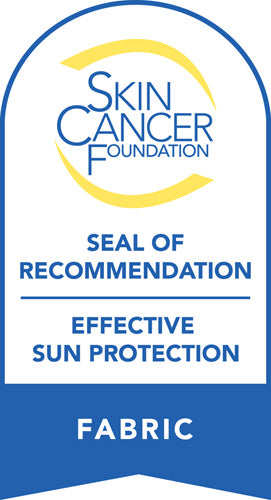Why You Need to Wear UV Clothing if You Have Lupus
It's estimated that approximately 5 million people across the world are currently diagnosed with lupus, an autoimmune disease. Although there's a large handful of complications associated with this condition, many people are unaware that those who have lupus are extremely sensitive to UV rays.
Fortunately, wearing sun protective clothing can help protect you, especially if you live in a state with a particularly sunny climate.
Not quite sure how to begin? We’ve got all the info you need. Let's explore everything you should keep in mind.
What Exactly Is Photosensitivity?
For those who are unfamiliar with the term, photosensitivity refers to an individual who is sensitive to sunlight and overly vulnerable to ultraviolet rays.
Some individuals have more photosensitivity reactions than others, and this often depends on how progressed their condition has become. While a small minority of those who have lupus don't experience any photosensitivity, the vast majority do. All forms of lupus are capable of causing photosensitivity, but it is most prominent with widespread cutaneous lupus erythematosus and systemic lupus erythematosus.
It's believed that this photosensitivity is caused by increased cell death, something that lupus is known to trigger. As more and more cells are stripped away, the risk of photosensitivity increases.
What Symptoms Can Occur?
If a photosensitive individual comes into contact with too much UV, they can experience a handful of symptoms (many of which are unpleasant). In extreme cases, this person may develop a severe rash or even lesions. The latter scenario often prompts severe skin reactions, skin damage and medical attention.
More commonly, though, a photosensitive person will feel a large amount of fatigue or weakness if they spend too much time out in the sun. They could also experience joint pain.
Another rare but serious incident involves swelling of the internal organs.
It should come as no surprise that triggers for these symptoms should be avoided at all costs in order to preserve one's quality of life. For those with advanced lupus progression, even a short amount of time spent in sunlight could trigger a host of debilitating symptoms.
How Can I Protect Myself?
Fortunately, protecting your skin is relatively straightforward, as it simply involves taking the appropriate steps to reduce the effect of UV radiation. Ideally, you would avoid exposing skin. But, this isn't a practical option for most individuals.
Let's explore a few of the most notable ways you can avoid triggering your photosensitivity symptoms.
UV-Protective Clothing
Since this type of clothing provides a physical barrier between UV lights and your skin, it's by far the most effective option when it comes to managing your lupus photosensitivity. Under the right circumstances, you may be able to spend a significant amount of time outside without experiencing any symptoms at all.
Of course, this will also depend on how progressed your lupus has become.
Many people tend to forego this option due to having a misunderstanding of how it functions. After all, why would one shirt be more effective than another when it comes to blocking out the sun?
UV protective clothing is specifically designed to reflect or absorb sunlight before it can fully pass through the material and into your skin. So, even though the clothing they look like your typical long-sleeve shirt, it has a significant amount of utility when it comes to keeping you as safe as possible.
Sunscreen
Of course, this doesn't mean that you should avoid wearing sunscreen if you're going to be outside. This is particularly true for areas that typically experience high UV exposure, such as your hands, neck, and face.
When choosing a sunscreen, you'll want to find one that has an SPF value of 30 or higher. It's best to use a sunscreen that includes broad-spectrum protection, which handles both UVB and UVA rays.
Additionally, sunscreen doesn't become fully effective until approximately 30 minutes after you apply. So, be sure to cover yourself liberally in advance before you decide to go outside.
Minimize Sun Exposure
Even by taking the above precautions, it's still in your best interest to minimize the amount of time they spend on the sun and exposure to ultraviolet (UV) rays . If you do choose to go outside on a particularly sunny day, try to stay mostly in the shade such as under an umbrella, awning, etc.
If you handle these obligations appropriately, it's highly unlikely that you'll ever experience photosensitivity symptoms.
Artificial Light Matters, Too
Interestingly, sunlight isn't the only light that you'll need to worry about. Artificial light can also contain UV rays and cause the same exact issues as sunlight can.
In general, common artificial sources include tanning beds, a photocopier, and even some types of fluorescent lighting. So, keep an eye out for symptoms even if you spend a large amount of time indoors.
For example, an individual with lupus may work at a location that mainly uses fluorescent lighting. They may also notice that they tend to feel fatigued and achy as the day goes on. This is often without realizing that the symptoms stem from the lighting itself and not simply the mental fatigue with working.
You should avoid tanning beds at all costs, as they are one of the most harmful sources of UV rays for those with lupus (and even for those without this condition).
It Can Seem Complicated to Lupus Effectively
But the above information will make the process far smoother.
From here, you’ll be able to ensure that you avoid UV rays as much as possible to minimize the complications you have from your lupus symptoms.
Want to learn more about what we have to offer? Feel free to reach out to us today and see how we can help.
Why is UPF sun protection important for Lupus? Britt Clark from Lupus Lyfe explains why.



